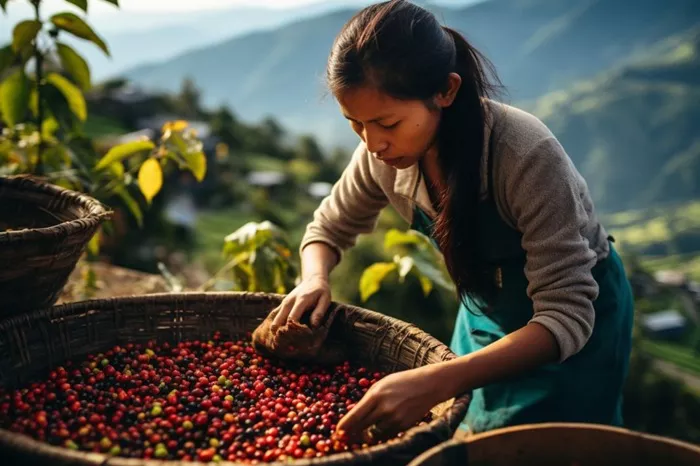Coffee prices saw an uptick on Thursday, with March arabica coffee (KCH25) closing up by +7.10 (+2.22%) and March ICE robusta coffee (RMH25) rising by +181 (+3.71%). The rally was driven by a surge in robusta coffee prices, which reached a 1-1/2 week high due to concerns about ongoing heavy rains in Vietnam disrupting the robusta harvest.
Vietnam’s Weather Impact on Robusta Coffee
Vietnam, the world’s largest robusta coffee producer, has been experiencing heavy rains that have flooded coffee fields and delayed the harvest. This follows a report from the Vietnam General Department of Customs, which on December 18 revealed that Vietnam’s coffee exports had fallen by 47% year-over-year in November to 63,019 metric tons. Coffee exports from January to November were also down by 14% compared to the previous year, at 1.22 million metric tons.
Brazil’s Rainfall and Coffee Supply Issues
While Vietnam faces harvest delays, coffee prices also fell earlier in the week due to increasing coffee supplies. Brazil, a major arabica coffee producer, has seen a shift in weather conditions. After a period of drought, recent heavy rain in Minas Gerais, Brazil’s largest coffee-growing region, eased concerns about water shortages, leading to a dip in prices.
Despite these changes, rising inventories are still a bearish factor for coffee prices. Arabica coffee stocks monitored by ICE rose to a 2-1/2 year high of 991,080 bags, while robusta inventories climbed to a 2-1/2 month high of 4,355 lots.
Weak Brazilian Real and Global Coffee Production Trends
Another negative factor for coffee prices is the weak Brazilian real, which has been hovering near record lows against the US dollar. This weak currency encourages Brazilian coffee producers to sell more coffee on the global market, adding pressure to prices.
Despite this, coffee prices rallied last month due to concerns over a smaller Brazilian coffee crop. Volcafe, a global coffee trader, revised its forecast for Brazil’s 2025/26 arabica crop down to 34.4 million bags, 11 million bags less than its previous estimate. This is attributed to the ongoing drought in Brazil, which is expected to lead to a global arabica coffee deficit of 8.5 million bags in 2025/26.
Impact of El Niño and Drought on South American Coffee Crops
El Niño conditions earlier in the year have caused damage to coffee crops in South and Central America. In Brazil, rainfall has been consistently below average since April, impacting coffee trees during the flowering stage and lowering the prospects for the 2025/26 arabica harvest. Colombia, the second-largest arabica producer, is also slowly recovering from the drought caused by El Niño.
Robusta Prices Supported by Lower Production in Vietnam
Robusta coffee prices are being supported by reduced production in Vietnam. The country’s coffee production for the 2023/24 season dropped by 20% to 1.472 million metric tons, the smallest crop in four years. The USDA projects that Vietnam’s robusta production in 2024/25 will dip slightly to 27.9 million bags.
Global Coffee Exports and Production Trends
Larger global coffee exports, however, could be bearish for prices. The International Coffee Organization (ICO) reported that global coffee exports for the 2024/25 season were up by 15.1% year-over-year in October, with total global exports for 2023/24 reaching a record 137.27 million bags. Brazil, a major exporter, also saw an increase in green coffee exports, with a rise of 2.7% year-over-year.
Despite these trends, the ICO reported that global coffee production in 2023/24 reached a record high of 178 million bags, due to an exceptional off-biennial crop year. Meanwhile, global coffee consumption rose by 2.2% year-over-year to a record 177 million bags, creating a slight surplus of 1 million bags.
Related topics:
- Cafés Legal Faces Bankruptcy After Rising Coffee Bean Prices
- Droughts Hit Brazil and Vietnam, Driving Coffee Prices Up
- Coffee Prices Rise Amid Weather Concerns and Tightening Supplies


